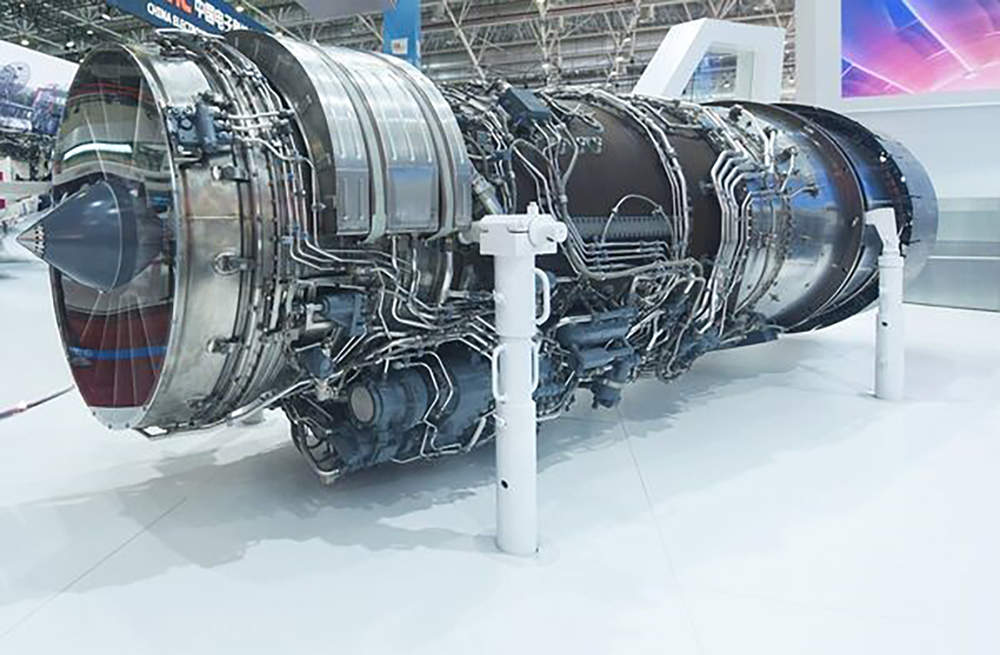
Date Posted: 17-Jul-2024
Author: Prasobh Narayanan, Bangalore
Key points
- The gap in capability that has long existed between Chinese and foreign military aero-engines has started to narrow
- But China still has much to do before it can produce the military aero-engines that match its strategic ambitions
China has been engaged in the development and production of military aircraft engines for decades, but its achievements have been relatively limited.
The lack of success has meant that China continues to rely heavily on aero-engines imported from Russia. These Russian systems – particularly the Saturn AL-31F and AL-31FN, and the Aviadvigatel D-30KP Series II engines – power Chinese front-line fighter aircraft, strategic transport aircraft, and bomber aircraft.
However, developments in the recent past show China is at last making some inroads, suggesting the reliance on Russia could be reduced, perhaps over the coming decade.
China's intent to enhance self-reliance in military aero-engines is motivated by several factors. These include long-standing Western military sanctions, limited access to Russian military engine technologies, and the strategic advantages associated with the provision of locally produced engines for locally produced military aircraft.
Having faced numerous delays in military aero-engine developments, China put in place in 2016 a plan to address this specific challenge, and this plan has proved the bedrock for contemporary progress.
The ‘Two Engines' plan – focused on progressing capability to develop and build aero-engines and gas turbines – was initiated by the State Council in 2013 and became part of China's 2016–20 13th Five-Year Plan (FYP). Inclusion in the 13th FYP made the Two Engines plan a national priority, an emphasis that has continued in China's current 2021–25 14th FYP.
 A model of the Taihang engine is displayed at Airshow China 2021 at Zhuhai. (Long Wei/Costfoto/Future Publishing via Getty Images)
A model of the Taihang engine is displayed at Airshow China 2021 at Zhuhai. (Long Wei/Costfoto/Future Publishing via Getty Images)
The Two Engines plan has supported China's development of military turbofans that span the thrust spectrum. They consist of low-bypass-ratio engines (including the Shenyang WS10 ‘Taihang', the WS15 ‘Emei', which is thought to be produced by Chengdu Engine, and the Guizhou Liyang WS19), the medium-bypass-ratio Chengdu WS18, and the high-bypass-ratio Shenyang WS20.
These powerplants are expected to form the backbone of China's efforts over the coming decade to finally indigenise the development and production of aero-engines that can power its front-line military aircraft and support Beijing's military and strategic objectives.
The main challenge that China has faced in fielding production-ready military aero-engines is likely linked to difficulties in overcoming reliability issues. Reliability in high-performance aero-engines is linked to the system's core technologies, its high-grade materials, alloys, and components – such as bearings, compressors, and turbine blades – as well as design and manufacturing processes.
These challenges mean that China continues to face a significant capability gap compared with international, and particularly Western, aero-engine manufacturers.
China's objective to develop and build its own military aero-engines is unlikely to have been aided greatly by its traditional heavy reliance on imported technologies and its tendency to reverse-engineer aero-engine systems. However, in recent years China's aerospace industry has increased its focus on independent research and the results are starting to pay dividends.
These capability gains are linked to the Two Engine plan and an associated restructure of the Chinese aero-engine industry, which was also initiated in 2016.
The Aero Engine Corporation of China (AECC) was established as a state enterprise in August of that year by reorganising and consolidating China's fragmented aviation engine and gas-turbine manufacturers that previously operated under the state-owned Aviation Industry Corporation of China (AVIC).
AECC comprises 27 units that undertake military/commercial aero-engine research and development (R&D), manufacturing, testing, and support.
Key AECC R&D and manufacturing subsidiaries include Shenyang Liming Aero-Engine, Xi'an Aero-Engine, Chengdu Engine, Guizhou Liyang Aero-Engine, Harbin Dongan Engine, and South Industry. Other leading AECC subsidiaries include Aero-Engine Control, which develops and manufactures engine control systems, and Beijing Institute of Aeronautical Materials and Baimtec Material, which develop and manufacture aero-engine materials.

A People's Liberation Army Air Force (PLAAF) J-20 fighter – powered by two Russian AL-31FN Series III engines – flies past at the Changchun Air Show at Changchun Dafangshen Airport in August 2022 in northeast China's Jilin province. (China News Service via Getty Images)






